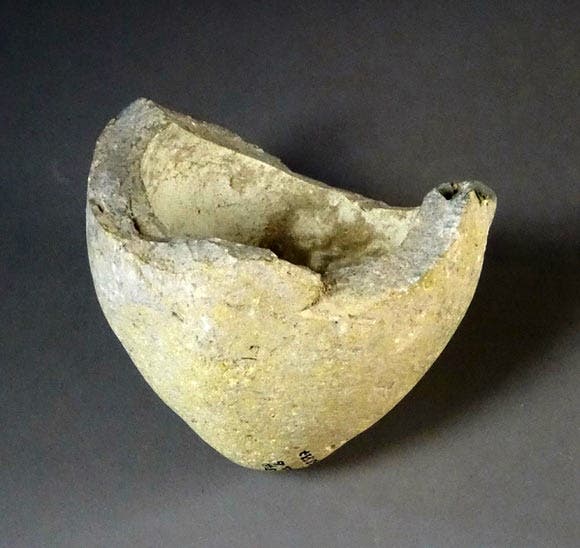
Pottery is among the most common types of artifacts that archaeologists get to find. Their ubiquity is explained by their immense practicality in basic day-to-day life. Scientists have learned a great deal about ancient cultures and people from their pottery, despite the fact they haven’t left written records. For instance, by analyzing trace amounts of organic material present on the vessels, it’s possible to determine the diet of a household. The abundance of pottery can also be used to measure a community’s wealth.
But when archeologists studied the contents of a handful of small vessels dating from the 11th or 12th century AD in Jerusalem, they were stunned by what they found. These weren’t your usual vessels for storing fish or wine, but may actually have been hand grenades, the kind of which may have seen action during the Crusades and subsequent siege of Jerusalem.
“These vessels have been reported during the time of the Crusades as grenades thrown against Crusader strongholds producing loud noises and bright flashes of light,” Dr. Carney Matheson, a researcher at Griffith University, said in a statement.
Pottery with a deadly surprise
The four vessels have a short neck, narrow opening, conical bases and spheroidal bodies and vary in size from a few centimeters to over 20 centimeters. This design for ceramic vessels has been encountered in many different archaeological contexts throughout the Middle East, from Egypt to Central Asia, from the 9th to the 15th century AD. These are very versatile vessels used for all sorts of purposes, storing anything from food or oil to medicinal and scented materials. And, as this new study shows, explosive compounds may have also been on the list.
Chemical tests on residues found on the walls of the vessels, discovered in the Armenian Garden in the walled Old City of Jerusalem, showed that three out of the four ceramic artifacts probably contained medicines and scented material. Nothing out of the ordinary — until they studied the fourth vessel.
This vessel, which had relatively thick walls and no decoration, contained fatty acids and notable levels of mercury, sulfur, aluminum, potassium, magnesium, nitrates, and phosphorous. These chemical compounds, in the right concentration and mix, could be used as an explosive.
That’s not such a far-fetched idea. Historical records suggest black powder was introduced in the region from China by the 13th century, and some believe black powder may have arrived even earlier, between the 9th and 11th century, the same timeline as these Jerusalem vessels.
“However, this research has shown that it is not black powder and likely a locally invented explosive material. We also revealed that some of these vessels have been sealed using resin,” Matheson said.
“More research on these vessels and their explosive content will allow us to understand ancient explosive technology of the medieval period, and the history of explosive weapons in the Eastern Mediterranean.”
Ceramic grenades of this type may have been thrown by Saladin’s troops during their siege of Jerusalem in 1187 AD, at the same time held by European forces. According to historical reports, these explosive devices made loud sounds and bright flashes of light, sowing chaos and panic among the crusaders.
Archaeologists studying ancient Arabic texts have even found recipes for making grenades, although no one so far has been able to reproduce one with the provided instructions.
The findings appeared in the journal PLOS One.









